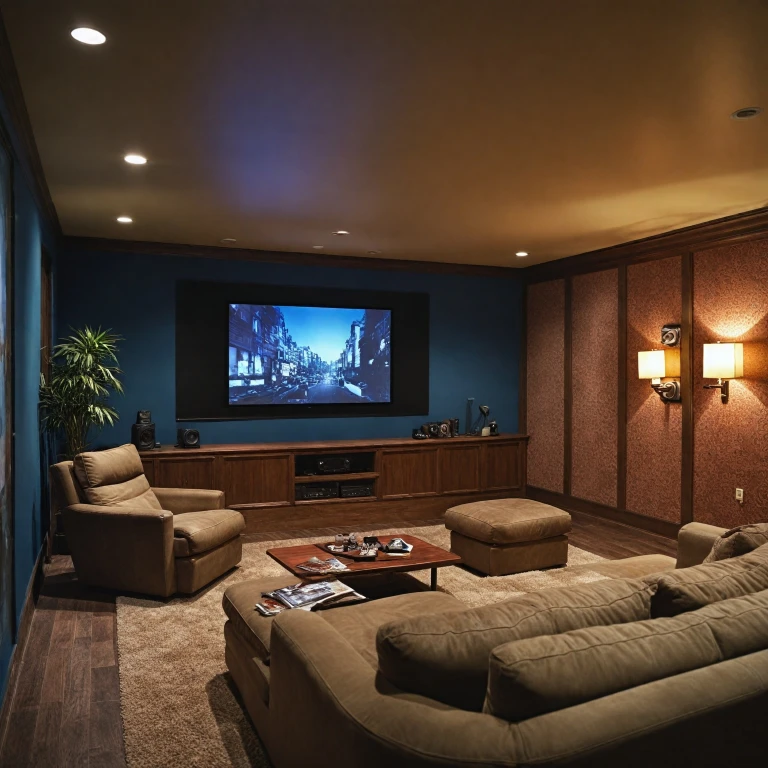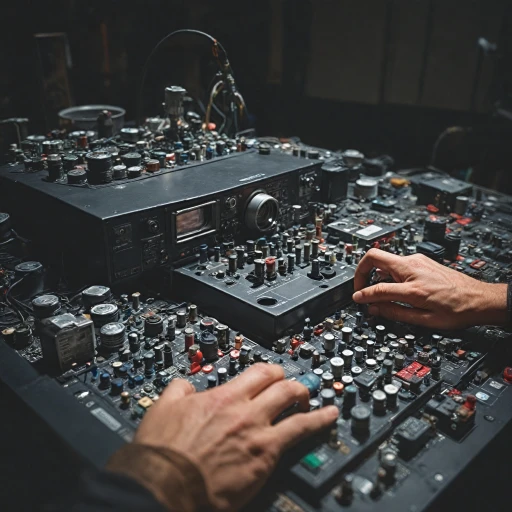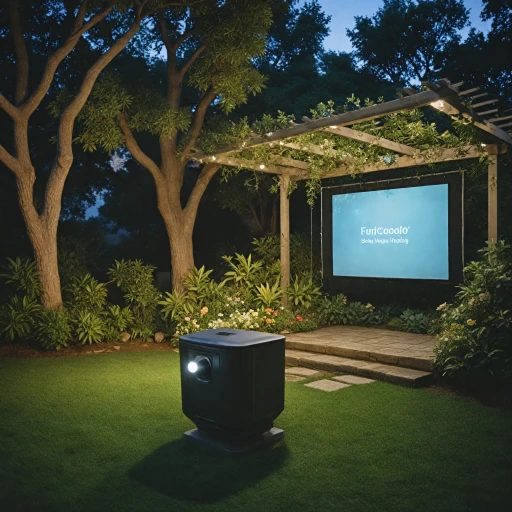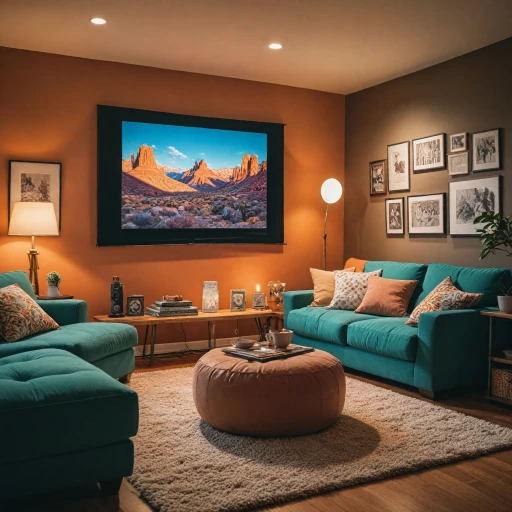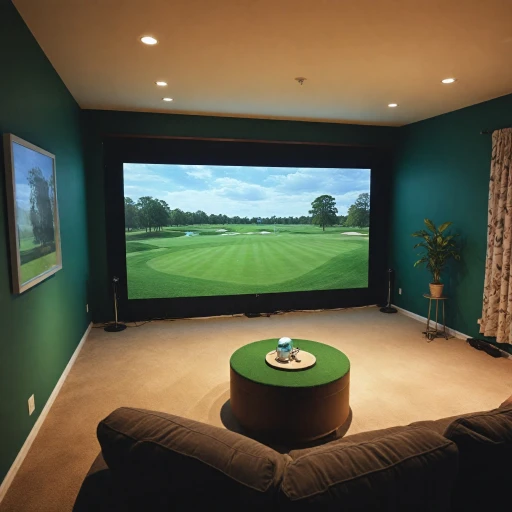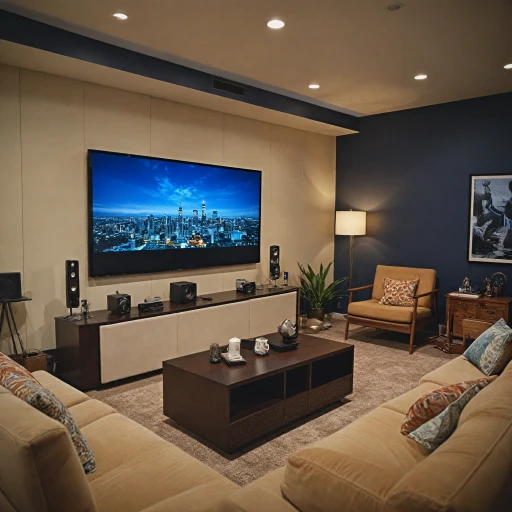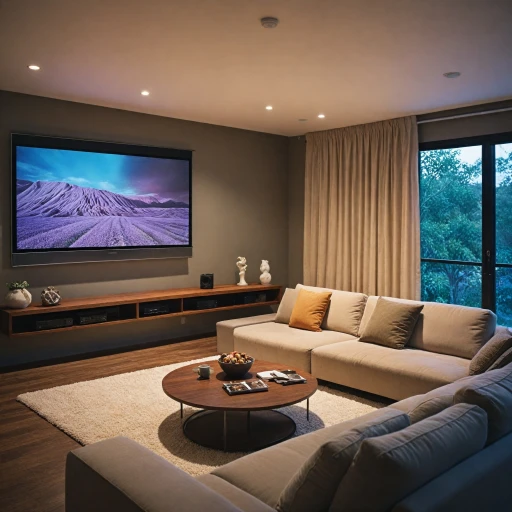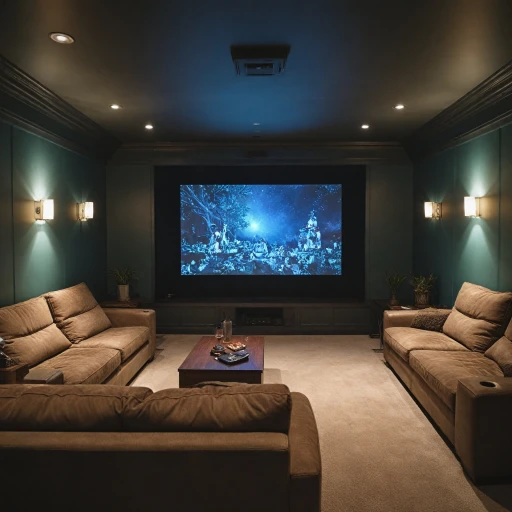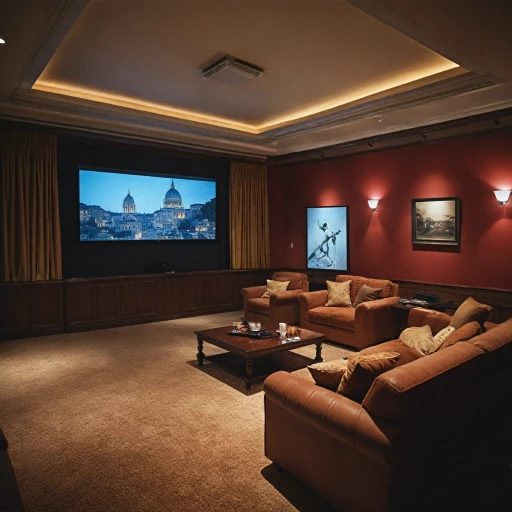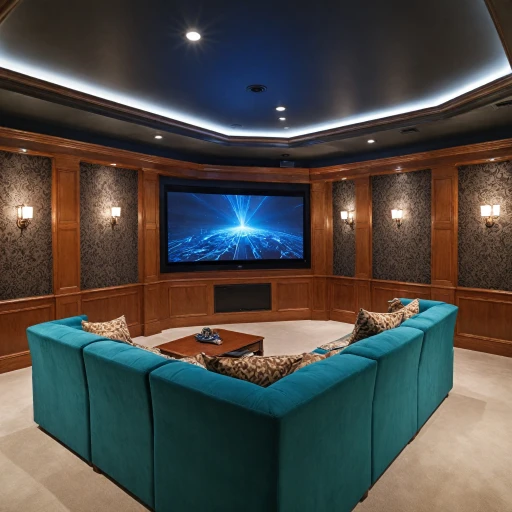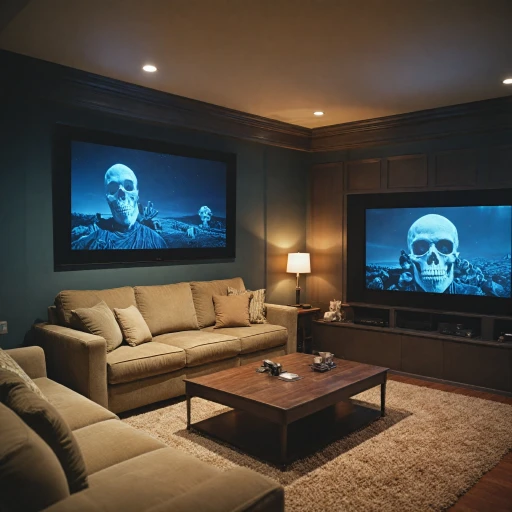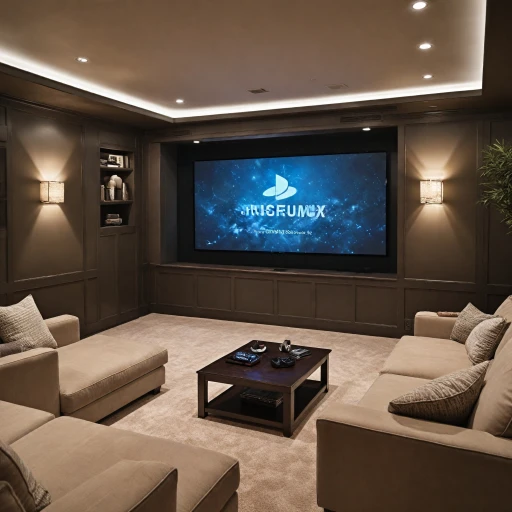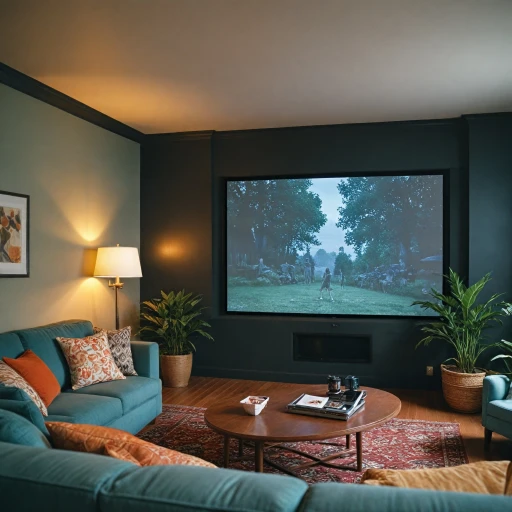
Understanding DLP Technology
The Intricacies of DLP Projection
Digital Light Processing (DLP) technology has revolutionized the home theater experience by providing superior image quality and unrivaled color vibrancy. At the heart of a DLP projector lies a micro-mirror chip, commonly known as the DLP chip. This chip is responsible for rendering high-resolution images by rapidly pivoting thousands of tiny mirrors. DLP projectors can harness different light sources, including LED and laser, to enhance image brightness and clarity, measured in projector lumens. Laser projectors, in particular, have gained attention for their longevity and performance. They use a stable laser light source, often a triple laser configuration, to produce a vivid spectrum of colors without the need for a color wheel.Color and Clarity: The Core of DLP
One standout feature of DLP technology is its ability to produce outstanding color accuracy. A DLP projector utilizes a color wheel that spins rapidly to filter primary colors, adding depth and realism to the image. This feature is particularly beneficial in creating a dynamic visual presentation on projector screens.From Short Throw to Ultra Short Throw
DLP projectors come in various throw distances, from standard throw to ultra short throw configurations. A short throw projector allows for a large image on the screen without requiring a long distance. Meanwhile, an ultra short throw model is perfect for smaller spaces, positioning the projector close to the screen without sacrificing image quality.Leading the Market with Innovative Products
DLP technology is integral to many manufacturers like BenQ, which are regularly featured in projector reviews due to their cutting-edge design and performance. These products often boast high resolution and robust image quality, meeting the rigorous demands of home theater enthusiasts. For more insights on the numerous advantages DLP could potentially bring to your home theater setup, you might explore how [[Christie laser projection can significantly enhance your theater experience]](https://www.home-theater-projector-guru.com/blog/exploring-the-benefits-of-christie-laser-projection-for-home-theaters).Advantages of DLP Projectors
Unveiling the Strengths of DLP Projectors
DLP projectors have carved out a unique niche in the realm of home theaters, largely due to their distinctive features and benefits. While each projector technology has its own strengths, DLP stands out for a few compelling reasons, making it a solid choice for many enthusiasts.
One of the primary advantages of DLP projectors lies in their ability to deliver high image quality through advanced DLP technology. This involves the use of a chip DLP system, where microscopic mirrors move to reflect light and create an image on the screen. With vibrant colors and sharp details, DLP projectors provide an immersive viewing experience perfect for everything from cinematic productions to high-action video games.
Thanks to their rapid color wheel speeds, DLP projectors excel in producing smooth motion. This is especially advantageous for fast-moving visuals, such as sports footage or action-packed movies, reducing the likelihood of motion blur.
When compared to LCD projectors, DLP options tend to have fewer moving parts, which often results in longer-lasting components and potentially less maintenance over time. This characteristic can ease the overall experience for users seeking a more hassle-free maintenance.
Moreover, DLP projectors typically offer better contrast ratios relative to LCD projectors, an attribute that enhances image quality especially in low-light conditions. This means deeper blacks and more vivid colors, contributing to a more dynamic and engaging viewing environment.
Light source options with DLP projectors, including traditional lamp, LED, and increasingly popular laser projectors, cater to different needs and preferences, with laser projectors offering longer lifespan and consistent brightness.
To make full use of your DLP projector, considering aspects such as the projector's resolution, how the triple laser or light source interacts with your space, and the projector lumens required for your intended use are important factors. Professionals often highlight brands like BenQ for their solid performance reviews in clarity and brightness across various DLP projectors.
For further insights on how DLP projectors and other technologies can enhance your home theater system, consider checking out how projectors featuring Google TV can enhance your viewing experience for the latest in entertainment technology integration.
Considerations for Choosing a DLP Projector
Factors to Consider when Choosing a DLP Projector
- Resolution: DLP projectors can offer stunning image quality with resolutions ranging from standard HD to 4K ultra HD. When choosing a projector, consider the resolution that best fits your needs, especially if you're planning on using it with a golf simulator or for ultra short throw applications.
- Brightness: The brightness of the projector is measured in lumens. A higher lumen count is essential for clear images in well-lit rooms. Check reviews to find a projector with the right balance of brightness and color for your space.
- Light Source: Options such as LED, lamp, and laser projectors each offer differing lifespans and color accuracy. While LED and lamp options are common, triple laser projectors provide vibrant colors and longer light source lives, which might be ideal for those seeking advanced technology.
- Throw Ratio: Consider whether a short throw or ultra short throw projector suits your setup. These projectors are excellent for smaller spaces, providing large images even when placed close to the screen.
- Color Performance: With a single chip DLP and a color wheel, these projectors offer consistent image quality. DLP technology ensures fewer color degradation issues compared to some LCD projectors, making it suitable for vibrant and enduring image quality.
- Projection Screen: Investing in compatible projector screens can impact the overall viewing experience. Ensure the screen material supports the brightness and resolution capabilities of your DLP projector.
- Brand and Product Reviews: Evaluate brands like BenQ, renowned for producing reliable and high-quality DLP projectors. Access projector reviews to assist in narrowing down the choices and transforming your phone into a home theater projector can further complement your setup.
Considering these factors, you'll be better equipped to select a DLP projector perfect for your home theater needs. It's crucial to weigh each feature carefully to match your preferences and space requirements effectively.
Setting Up Your DLP Projector
Optimizing Your Projection Experience
Setting up your DLP projector for a home theater involves much more than simply plugging it in and turning it on. Achieving the best image quality and optimizing your viewing experience requires a little finesse.- Positioning the Projector
Consider the throw distance of your projector. A standard throw projector requires a specific distance between the projector and the screen, while short throw and ultra short throw projectors allow for placement closer to the screen. Accurately measuring and positioning your projector based on its throw capability is crucial for the best results. - Projector Screen Selection
Pairing your DLP projector with the right screen enhances performance. The screen material can impact light reflection and color reproduction, so choose one compatible with your projector's technology, whether it's DLP, LCD, or laser. - Adjusting Settings
Adjust the color, brightness, and contrast settings tailored to your viewing environment. Each room may require different settings depending on ambient light and distance. Refer to projector reviews for guidance specific to your model, whether it's from brands like BenQ or others. - Light Source Considerations
DLP projectors come with different light sources such as LED, laser, and traditional lamps. It's essential to understand how these impact the image quality, lifespan, and brightness measured in lumens. Laser projectors typically offer longer lifespan and consistent brightness over time. - Integration with Audio
Complement your DLP projector's visuals with a quality sound system. Integrating your projector with an audio system ensures you have a well-rounded sensory experience.
Maintenance and Troubleshooting
Keeping Your DLP Projector in Prime Condition
Proper maintenance of your DLP projector is essential to ensure it continues to deliver exceptional image quality and performance over time. Here are some key maintenance tips to help you get the most out of your device:- Regular Cleaning: Dust accumulation can impact the function of your projector. Use a gentle, dry microfiber cloth to clean the lens and the outer casing routinely. For harder-to-reach areas, a can of compressed air can be helpful.
- Filter Inspection: Some DLP projectors come equipped with filters to maintain airflow. Check these filters periodically and clean or replace them as needed according to the manufacturer’s guidelines.
- Light Source Care: Whether your projector uses a LED, laser, or traditional bulb, it's important to monitor the light source's condition. Regularly check the light output for any signs of dimming and be prepared to replace the bulb when necessary. The projector's manual will usually provide guidance on the expected lifespan of its light source.
- Color Wheel Attention: In certain DLP projectors, the color wheel plays a crucial role in image production. If you're noticing color balance issues, it may be time to have a professional examine the color wheel for potential maintenance or replacement.
- Firmware Updates: Occasionally, manufacturers release firmware updates to improve functionality and fix bugs. Ensure your projector is always running the latest software by checking the manufacturer’s site regularly.
- Professional Service: When issues arise that you cannot troubleshoot on your own, such as persistent image faults or mechanical problems, it's wise to seek professional repair services. Regular professional maintenance can extend the life of your projector.
Comparing DLP with Other Projector Technologies
Comparing DLP with LCD and Laser Technologies
When diving into the world of home theater projectors, it’s essential to understand how DLP technology stacks up against other popular options like LCD and laser. Each technology offers its unique strengths, so let's delve into their differences to help narrow down your choice.- Image Quality and Color: DLP projectors often excel in producing vibrant colors due to their color wheel technology, which accurately reproduces hues for a cinema-like experience. Conversely, LCD projectors harness liquid crystal displays to deliver sharp images, making them excellent for detailed content like text or graphics. Laser projectors, with their triple laser setup, provide a broad color gamut and superior brightness levels.
- Light Source and Brightness: DLP projectors typically incorporate a chip and lamp light source, resulting in high brightness and longer illumination times. Lasers, on the other hand, offer exceptional longevity and higher lumens compared to both DLP and LCD, reducing the need for frequent maintenance. LCD projectors are generally reliant on traditional lamp sources, which might not match the extended lifespan of laser projectors but can offer bright, vivid imagery nonetheless.
- Resolution and Image Clarity: Modern DLP projectors can achieve high resolution, ensuring crisp and clear visuals. However, they might suffer from the 'rainbow effect' due to their spinning color wheel, which some viewers find distracting. LCD projectors avoid this issue altogether, providing consistent clarity. Laser technology, equipped with its ultra-clear and detailed output, really shines in delivering sharp images across various screen sizes.
- Portability and Setup: DLP projectors are often more compact and portable, ideal for versatile room setups and smaller spaces. Short throw and ultra short throw variations, commonly available in DLP models, allow users flexibility in placement. LCD projectors, while generally larger, often come with straightforward setup processes. Laser projectors, noted for their sleek design, are the most adaptable in positioning due to their wide throw ranges.
- Cost and Maintenance: The initial cost of DLP projectors is often more affordable, making them an attractive choice for budget-conscious buyers. LCD units tend to fall in a similar price range but may require more frequent lamp replacements. Laser projectors, being at the cutting edge of technology, come with a higher price tag but promise lower maintenance costs over their lifespan.
